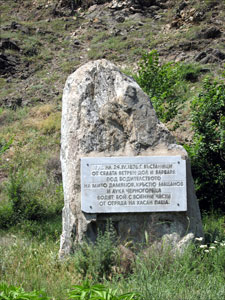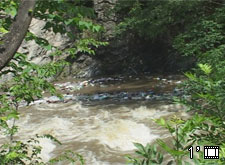 |
 |
 |
 |
 
The second time it happens, B and I see it at the same time and we are both intrigued. We all go to investigate. It turns out that the rushing mountain stream carries a good deal of plastic freight with it which sometimes gets trapped in eddies. These change their location according to the seasonal highs and lows of the river. The fact that the swirling assemblage will disband, move on only to collect at another point, has something magical, almost exhilarating, plastic-duck-in-a-bath-like about it. Hide and seek. On the other hand it puts both L and me in mind of the dam last year near Kardzhali where it was just floating plastic debris, grey aquatic scum accreted behind a concrete wall. She mentions the beach at St. Louis in Senegal, where the plastic-bearing river empties into the sea. The Atlantic currents proceed to distribute the plastic bottles, bags and other rubbish, including ghost nets, along the coastline. The major advantage of plastic, its lightness compared to clay, is ecologically offset here by its durability after it no longer fulfils its function as a container. |
|

|
|
 |